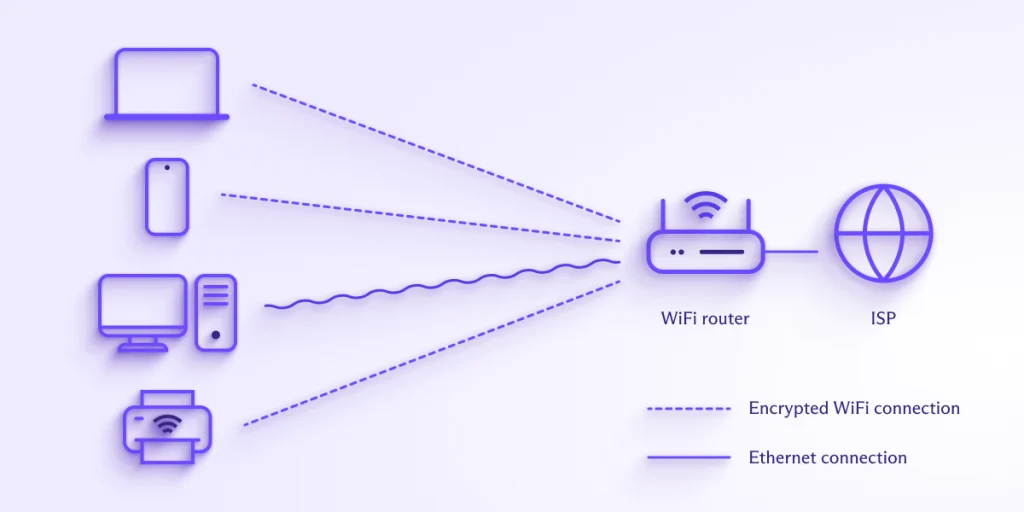Wireless Lan design and implementation “WIFI”
Designing and implementing a Wireless LAN (WiFi) network involves several key steps to ensure robust and reliable connectivity. Here’s an overview
- Quality
- Accuracy
- Safety
- Reliance

Key Steps in WiFi Network Design and Implementation

1. Assessment and Planning
- Site SurveyConduct a thorough site survey to understand the physical environment, identify potential interference sources, and determine optimal access point (AP) locations
- Capacity PlanningConsider the number of concurrent users, types of devices, and bandwidth requirements to ensure the network can handle peak loads
2. Design
- Access Point PlacementStrategically place APs to provide comprehensive coverage and minimize dead zones. Use tools to simulate coverage and optimize placement
- Channel PlanningAssign channels to APs to minimize interference and maximize performance. Consider using automatic channel assignment features
- Security MeasuresImplement robust security protocols, such as WPA3, to protect the network from unauthorized access


3. Implementation
- Hardware InstallationInstall APs, switches, and other necessary hardware according to the design plan
- ConfigurationConfigure network settings, including SSIDs, security protocols, and VLANs, to ensure proper operation
- TestingPerform thorough testing to verify coverage, performance, and security. Adjust settings as needed to address any issues
4. Maintenance and Support
- MonitoringContinuously monitor the network to detect and resolve issues promptly. Use network management tools to track performance and usage
- Updates and UpgradesRegularly update firmware and software to maintain security and performance. Plan for future upgrades to accommodate growing needs

